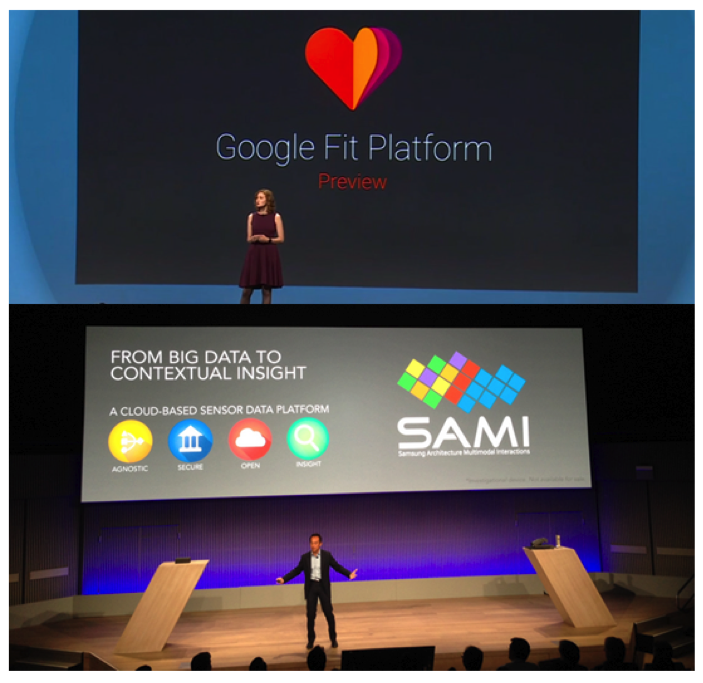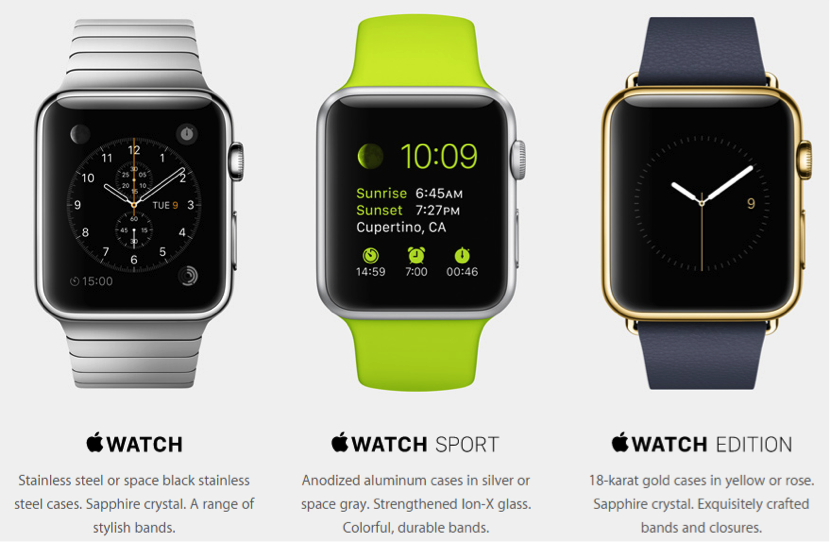Dan Munro says that as much as we want to blur the line between digital health’s two colliding worlds—consumer health and patient health—we really can’t. At least not yet.
Apple has long been considered a global tech titan. As such, it formally dominates the global media stage at least twice every year. The first is in the summer at the World Wide Developer Conference (WWDC) and the second is in the fall at its own private event ‒ this year dubbed "Apple Live." The media anticipation and frenzy surrounding both is enormous ‒ as it should be. Apple not only represents the cutting edge of mobile tech and design, it's a financial juggernaut that could well be the world's first trillion dollar company. Today its market cap is hovering around the $600 billion mark.
In fact, it was exactly 13 years ago this month (October, 2001) that Apple first introduced the Apple iPod. Very humble beginnings indeed for such an amazing trajectory.

The media frenzy this year was no different and it started in June with the announcement (at WWDC) that Apple was not only keenly interested in healthcare as a vertical industry, but it had some very aggressive ambitions moving into consumer health and wellness. Apple has enjoyed enterprise healthcare success ‒ but not as a direct focus ‒ more as Apple devices that were successfully deployed in large, enterprise healthcare settings.
Hospital Calculates the ROI of an iPad at 9 Days
Cedars‒Sinai Taps iPhone For Enterprise Mobility
The "framework" they announced at this year's WWDC is called HealthKit and it’s analogous to a kind of digital sandbox on an iOS device for collecting and then sharing health data. They announced HealthKit against an impressive backdrop of healthcare partnerships. The partnerships all allude to the provocative vision of iOS as a secure and bi‒directional consumer gateway to enterprise health information.

For those of us who cover the healthcare industry it wasn't that surprising. Earlier in the year, both Samsung and (Apple's biggest rival according to Tim Cook) Google announced similar "frameworks" or "platforms" for sharing health data with the enterprise healthcare ecosystem. Google's is called simply Google Fit and the Samsung version is called SAMI.

At some point, I'll do a deeper technical analysis of the different platforms, but at this stage, it's really premature. For one thing, these announcements (as evidenced by the images) are all bathed in heavily staged arenas with bright floodlights, big graphics and scant details.
The carefully crafted announcements also make it hard to accurately assess their full technical potential. It's easy (and wildly popular) to fantasize about the possibilities, but that's not very productive when it comes to a vertical industry like healthcare. The only purpose in highlighting all 3 of the announcements this year is that Apple's foray into healthcare was fully anticipated ‒ and healthcare itself has officially arrived to the mobile party. As with Samsung and Google ‒ Apple did not disappoint with their announcement.
But once the stage is empty and the lights (and selected press) are gone ‒ what happens next? In Apple's case, it was a wild ‒ speculative ride after WWDC to September in anticipation of their second event ‒ Apple Live. The speculation between the two events was rampant. Apple had hired a killer team in life sciences ‒ and meetings were held with the FDA. Like Google's contact lens for sensing blood glucose, the attention shifted quickly to Apple's first wearable ‒ which everyone assumed would carry the traditional Apple moniker ‒ iWatch.
As it turns out ‒ it's not called iWatch after all, but rather Apple Watch ‒ and there are several distinct (and attractive) options (with more on the way no doubt). Like the iPod ‒ there will be several "versions," styles and fashions which is an important consideration for every wearable device compared to a portable one.

All of which is the right staging to talk about the two colliding worlds of digital health. The first revolves around consumer health, fitness and wellness ‒ call it consumer health ‒ and the second is around clinical health ‒ we'll call this patient health. As much as we want to blur the line between these two worlds ‒ we really can't. At least not easily or quickly ‒ and not with any single vendor solution ‒ even if it's Apple.
There are many reasons for the big distinction between consumer and patient health when it comes to collecting and then using data, but I see these as the top 3 ‒ keeping in mind that this applies to Apple and Samsung and Microsoft and Google and LG ‒ and really everyone equally.
-
Clinical Accuracy
-
Interoperability
-
Liability
The first is outright clinical accuracy.
When I use an FDA approved blood glucose meter ‒ I'm assured that the device has been scientifically tested for accuracy and reliability. That's why we have governing bodies to approve medical devices. Here in the U.S. it's the FDA ‒ but almost all industrialized countries have something similar ‒ for that reason. It's important to separate wild vendor claims (typically for profit) against scientifically proven ones. Nowhere is this more important (and potentially life threatening) than healthcare. None of these "first generation" devices from Apple, Samsung, LG (and others) that collect biometric information have been FDA reviewed or approved. That makes any data collected via these devices interesting ‒ but of no real clinical value. Even a temporal reading of body temperature with an FDA approved device is suspect because of its location. Of the 3 primary sources of body temperature measurement ‒ temporal is the lowest in terms of accuracy compared to oral and rectal. Temporal may be easiest for an active toddler ‒ but it is not as accurate clinically.
Beyond clinical accuracy is the need for interoperability.
We're miles from this and the battle we've struggled with in healthcare (around clinical data interoperability) is now moving quickly into the consumer device world. Apple is a proprietary platform. Google Fit is proprietary (to Android devices) and SAMI is proprietary to Samsung. This doesn’t bode well for the quote everyone needs to avoid.
Nurse: I'm sorry Mrs. Jones, but the lab results from your recent doctor's visit are only available on an iOS (or Android) device.
For those keeping track ‒ this is why so much of healthcare remains stuck on paper (even to this day) and why the lowly fax machine remains the lingua franca in healthcare. Paper (and fax) are universal languages (even if they are painful to manage, store and retrieve).
The third issue around health data is liability ‒ and ties back to clinical accuracy in some ways ‒ but it's also distinctly separate.
Not to pick on AliveCor (the heart monitoring device that attaches to a smartphone), but it's a great example of a consumer device (with FDA approval) for (single lead) heart monitoring. While it's a great tool for remotely monitoring heart disease, the questions around liability have just begun. Who is liable (and when) for monitoring the constant stream of data the device is capable of producing? As a cardiologist, should you be expected to review every test that's transmitted electronically to your office for free? Who's responsible for the 911 call when the 7 year old granddaughter of a cardiac patient elects to use granddad's toy to measure the heart rate of the cat? The questions cascade quickly ‒ and have no quick or easy answers.
These aren't technical questions ‒ they're largely ones around the business of clinical healthcare delivery ‒ and they're not trivial.
Which is why it really came as no surprise that a first review of Apple's HealthKit earlier this week ‒ titled Apple's Health App Is an Embarrassment ‒ was so blistering and included these quotes:
[Apple's] Health [app] doesn't have any of the behavioral or social features which are key to a fitness app's success. There's simply no reason to use it, except as a crude data-storage tool.
And then there's the Health app's design. It's not exactly ugly, but it's not useful. The interface is confusing, and the app doesn't provide any kind of interpretation for what I'm seeing, or suggestions on what to do differently in terms of my exercise or nutrition.
But it seems maddening that Apple would hire dozens of health and fitness experts only to produce such a crippled, useless piece of software.
The point here isn't to bash Apple ‒ although that's how this will be interpreted by the tech intelligentsia and Apple faithful ‒ but it is absolutely to say that consumer health data is vastly different than patient health data ‒ for all of the tech titans ‒ including Apple.
It's certainly fun (and popular) to speculate about the world of future possibilities, but that's not productive when it comes to moving the needle in clinical health today.
Actual healthcare (in all its forms) is hard work. As much as we want to "gamify" and "glorify" it, health is a marathon ‒ not a sprint ‒ and there's a huge gulf between apps and tech devices designed to amuse and entertain us (with built‒in behavioral motivations to use often) versus ones that have no entertainment value but are critical for health and well being.
In the realm of health data ‒ whether its consumer health data or patient health data ‒ our behavior and motivations are vastly different. So too are the business models around adoption, efficacy and ROI. It's exciting to see the digital and mobile health worlds explode and collide with new ideas and experiments, but there is still a very clear and bright line between consumer health data and patient health data. As big as Apple, Google, Samsung and LG are ‒ they don't have the capacity to change the physical properties of our health with a device or app just yet. We certainly welcome and embrace all the tech vendors working in the digital health ecosystem, but on the path to clinical relevance and changing consumer behavior around health ‒ it's really just the very beginning.

